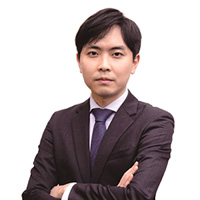[Exclusive] Seoul Fashion Week to show world’s first stretchable display
By Choi Si-youngPublished : Aug. 4, 2024 - 17:33

The spring-summer 2025 Seoul Fashion Week, set for next month, brings to the runway something unlike anything seen since 2000 when the biannual show began: Stretchable display panels -- worn by models, who will tout them as the “next (thing) in fashion.”
The designer behind this project is Lee Chung-chung, womenswear designer and founder of LIE, whose runway will be the finale of the five-day fashion week starting Sept. 3 at Dongdaemun Design Plaza, with a demonstration of how panels can be stretched, folded and crumpled up like a paper bag.
“‘Neo-Craftsmanship’ is the theme this year,” Lee said. “The so-called stretchable panels will be a new way to express oneself, and defining the kind of craftsmanship that embraces fresh additions to fashion is where I’m going with the spring-summer collection,” he added.

Lee -- a designer known for exploring something new by tying fashion to something else seemingly unrelated -- had been the right partner to work with, according to a researcher with direct knowledge of panel development. LG Display spearheads the project in a government-funded push for “core technologies” with industry-wide applications. Stretchable panels for firefighter and military have long been floated.
“LG wants to make the panel more relatable, so that the public can easily identify with its uses, starting with fashion -- people’s everyday life,” the researcher explained, requesting anonymity to shed light on internal discussion. “Fashion is intuitive. If something is practical, you see that right away.”
The panel is the world’s first high-resolution display that is 100 pixels per inch and can stretch more than 20 percent. LG rolled it out in November 2022, an initial prototype that took about two and half years since starting development. The 12-inch panel that will be put up on the September fashion show runway will be more reliable than the one revealed at the time, according to the researcher.

“Basically, we made sure the panel stretches even more than 20 percent and can do so under extreme conditions. More than 10,000 tests were conducted on the panel itself to ensure that,” the researcher said, stressing heightened flexibility as well as resolution and size -- a combination that has to strike the right balance for optimal performance and user experience. The panel is less than 0.5 millimeters thick and made of a silicone-based polymer called polydimethylsiloxane. PDMS is used in contact lenses.
The researcher declined to elaborate on what kind of tests exactly had taken place to avoid spilling trade secrets. “Full product commercialization could come by 2029 or 2030,” the researcher added, citing hurdles to clear for LG Display, which supplies to electronics makers like its sister company LG Electronics as well as Samsung Electronics and Apple.
LG Display will discuss the reception at Seoul Fashion Week in a November meeting of relevant parties that will essentially bookend the government-funded project. The norm for companies following such a meeting is to come up with their own ways to advance progress -- a step that appears unclear for now, given what some industry watchers describe as sapping business confidence.
“Nothing definitive right now,” the researcher said.
-
Articles by Choi Si-young





![[Herald Interview] 'Trump will use tariffs as first line of defense for American manufacturing'](http://res.heraldm.com/phpwas/restmb_idxmake.php?idx=644&simg=/content/image/2024/11/26/20241126050017_0.jpg&u=20241126161719)












